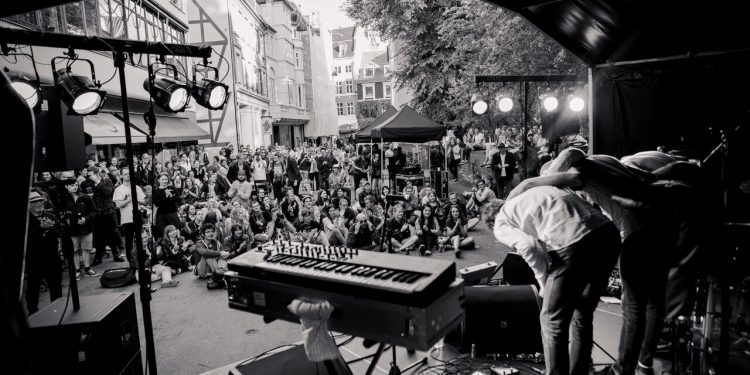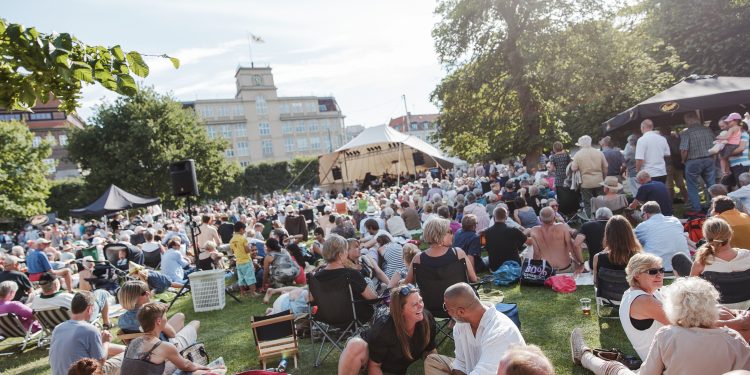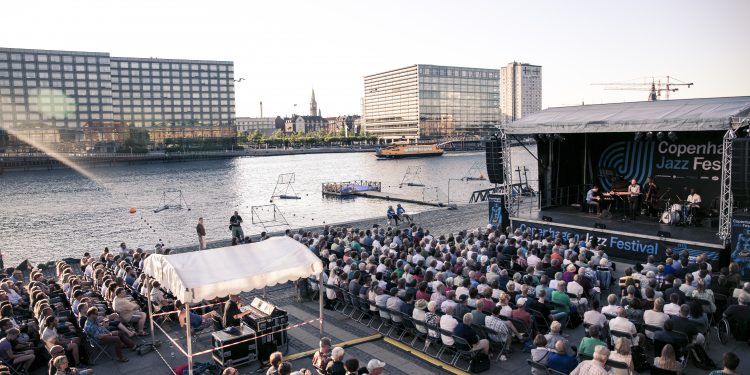It’s that time again – the JAZZ festival time
Despite its American origins, jazz has an amazing long standing and strong profile in Denmark and the Copenhagen Jazz Festival, one of Europe’s largest and most important international music events, takes place every year in July.
The article continues below.
By Bente D. Knudsen Pictures: Kristoffer Juel Poulsen/Copenhagen Jazz Festival PR
The festival has been running non stop every year since the first one in 1979, and the format hasn’t changed much since the beginning. Instead, it just keeps growing.
If you are in Denmark during in July, even without being a jazz fan – it is a great opportunity to discover this music form.
With a large selection of both free and paying concerts, it can be difficult to chose amongst the more than 120 venues, with 1,200 concerts all over town.
The festival is a mix of international names, as well as smaller local ones, and the more than 250,000 visitors can enjoy modern jazz and swing as well as countless offshoots of jazz during the two week festival.
Take not that the prominent concerts sell out quickly in the famous clubs and concert halls, so be quick to decide if you want to go to a concert that requires prepaid tickets..
However, with the wide range of open and free live ones in the city’s gardens, squares, streets and cafes, there is something for everyone.
Copenhagen Jazz Festival 2019 takes place from 5 – 14 July.
Look for information on all the concerts (also in English) here.
The article continues below.
A little history on why Denmark so big in Jazz
Danish jazz expert Fimmer Engel is the host and editor of P8Jazz, Danish Radio’s jazz station. According to her, of course, the jazz inspiration came from the US.
“Jazz reached Denmark in the 1920s. Especially the big bands, in Danish Danse Orkestre, reached out and appealed to a large crowd. Even though jazz was also seen as breaching the traditional classic music tradition, and some – such as classic composer Carl Nielsen, were certain it would quickly die out.”
When Josephine Baker performed in Denmark in 1928 with her famous bare breasts it was a very controversial act creating quite a spectacle.
However, instead of killing the music genre, it only contributed to making it more popular.
In the 1930s, jazz music had found its Danish roots and the Danish Big Bands, such as Erik Tuxen and his orchestra, with Leo Mathisen on the piano, became icons.
Later Leo Mathisen made it big with the hit Take it easy boy boy, which is still well-known amongst Danish jazz enthusiasts and being one of those easy rhythms, most Danes can hum along without even being aware of its jazzy origins.
Danish Sven Asmussen became an internationally recognised jazz artist as well, having played or recorded with artists such as Fats Waller, Josephine Baker and The Mills Brothers – he celebrated his 100th birthday last year.
During the Second World War, jazz and listening to jazz records was forbidden.
“It was seen as Negro (ed.black was not used at the time) music and records became difficult to get hold of. Of course this only made its appeal stronger and listening to jazz music became a symbol of resistance to Nazi occupation,” Fimmer Engel explains about the war years.
After the war a lot happened in the US and during the late 1940s and early 1950s the old Big Bands lost their appeal.
Instead modern jazz and bebop developed in the US, and artists such as Dizzy Gillespie and Dan Redman performed in Denmark. This brought modern jazz and jazz records to Denmark, and Danish jazz musicians such as Max Bruel and Jørgen Ryg took on the new sound.
In 1959, when the big Copenhagen jazz scene Montmartre opened, it attracted internationally renowned artists.
Due to the American racial issues during these years, black jazz musicians came to Europe seeking a better life.
Many of them, remembering that Louis Armstrong was well received in Denmark, made Denmark their European base.
Names such as Ben Webster, Dexter Gordon, Ernie Williams and Stan Getz lived here for longer periods; they attracted other jazz musicians and also served as inspiration for Danish musicians, such as bassist Niels Henning Ørsted Pedersen.
Kenny Drew was one of several American jazz musicians who settled in Europe around this period: he moved to Paris in 1961 and to Copenhagen three years later.
Kenny Drew became a well-known figure on the Copenhagen jazz scene, recording many sessions with Niels-Henning Ørsted Pedersen, with whom he founded the Montmartre House Orchestra.
½
Public service’s influence on the jazz scene with DR jazz group and DR Big Band
In the 1970s modern big bands are formed and in Denmark notably the public service channel launches its own big band in 1978, the DR Big Band with Thad Jones as its director. Thad Jones had made the surprising move to Copenhagen in 1977, following the other American jazz musicians.
He turned the Danish Radio Big Band into one of the world’s best and it achieved great international success. Later he also taught jazz at the Royal Danish Conservatory in Copenhagen.
The Danish jazz scene was vibrant during the 1970s attracting many different artists with both modern, avant-garde and bebop musicians performing – it was thus that the Copenhagen Jazz Festival was born in 1979.




